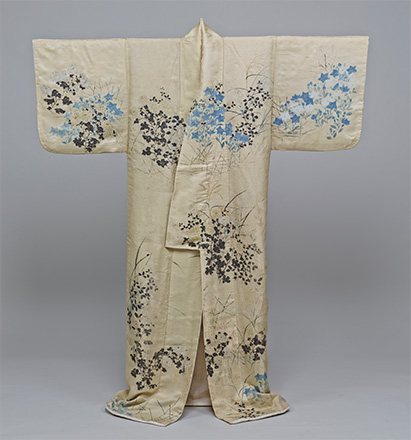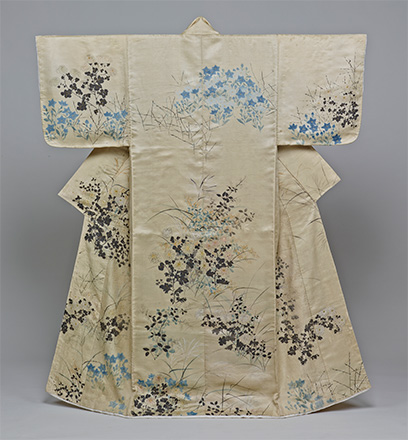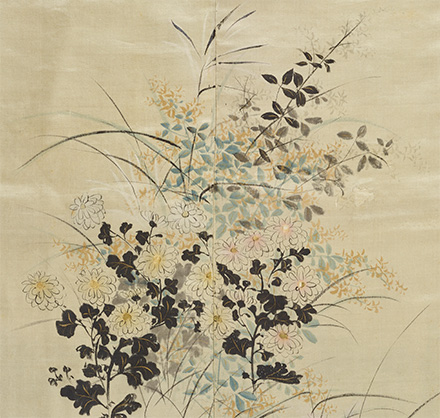Object Outline


Robe (Kosode) with Autumn Flowers
By Ogata Korin
Edo period, early-18th century
Important Cultural Property
The Important Cultural Property Robe (Kosode) with Autumn Flowers was designed by Ogata Korin, an Edo period artist who gave his name to the renowned Rinpa school.
Korin was born in Kyoto. He later went to Edo (as Tokyo was formerly known) and in 1709 he stayed at the house of a lumber merchant named Fuyuki family, located in the Fukagawa district. He drew this pattern for the wife of the merchant, which is why the garment is also known as the Fuyuki Kosode.
Garments with unique patterns or pictures painted directly onto the surface using ink or color were very popular among the wives of wealthy merchants. This trend explains why Korin was asked to draw this pattern on the kimono.
The Korin Kimono features autumn flowers such as chrysanthemums, bush clovers, bellflowers and pampas grass, all rendered using different shades of indigo. Bellflowers unfurl across the upper section, while chrysanthemums and bush clovers bloom wildly from the waist downwards.

Clusters of blue and white balloon flowers are depicted in an uncomplicated fashion.They exude a hand-drawn air, with gold pigments also used in the flower centers and leaves.

The back section features a vivid, well-balanced design of chrysanthemums, bush clovers and pampas grass. The gradations of indigo and black ink are accentuated by red and yellow shading.
A glance at the overall design reveals a blank section around the waist where the obi belt was tied. Korin’s parents ran Karigane-ya, a kimono merchant that dated back to the Azuchi-Momoyama period (1573–1603). This probably explains how he was able to draw the pattern with such a clear image of how the garment would look when worn.

